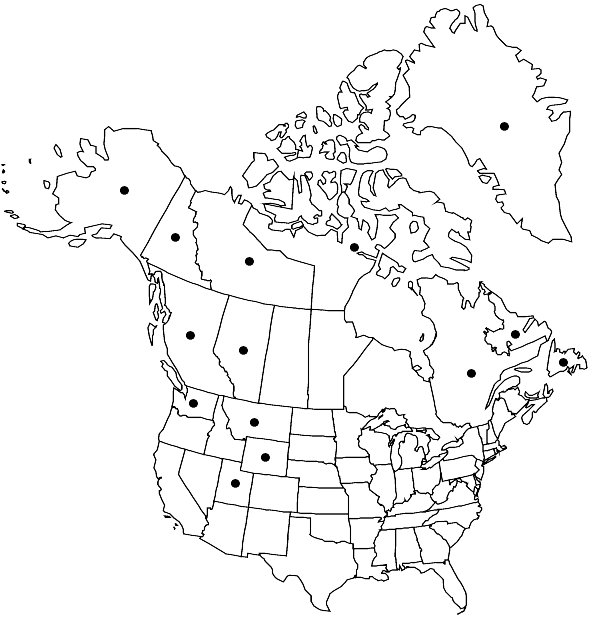Polytrichastrum sexangulare var. sexangulare
Plants small to medium, in loose tufts. Stems with cortical cells thin-walled. Leaves loosely to densely imbricate, erect-incurved at the tips, often ± secund, obtusely cucullate; sheath broadly elliptic, contracted to the blade; marginal lamina 2–6 cells wide, slightly broader and inflexed in the distal part of blade; perichaetial leaves similar to the foliage leaves. Seta straight. Capsule (4–)5–6-angled to terete; short-cylindric to ovoid to subglobose; peristome teeth 50–64, slender, of uniform size.
Habitat: Damp gravelly soil and rocks, snowbed communities and beside snow-melt streams
Elevation: moderate to high elevations
Distribution

Greenland, Alta., B.C., Nfld. and Labr., N.W.T., Nunavut, Que., Yukon, Alaska, Mont., Utah, Wash., Wyo., Europe, Asia (Japan, Russia in s Siberia), Atlantic Islands (Iceland).
Discussion
In Nunavut, var. sexangulare is known from Baffin Island. Even when sterile, it can usually be recognized by secund, tubulose leaves with an obtusely cucullate apex. Polytrichastrum alpinum var. septentrionale is similar, but has papillose lamellae, and the leaf apex is not cucullate.
Selected References
None.